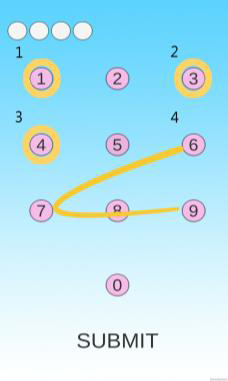This year Google presented their 2018 Faculty Research Awards to a select group of 13 researchers around the world in the category of human-computer interaction (HCI). Professor Xiaojun Bi from the Department of Computer Science at Stony Brook University is fortunate to be one of the 13 researchers. He won the award for his project, Gesture Typing Based Authentication Methods on Smartphones.
This is the second time that Google has recognized Bi’s HCI work. Bi says, “I am deeply grateful to Google for recognizing me and my research team with the prestigious Google Faculty Research award two years in a row. Google’s support will not only boost research in my lab, but also provide opportunities for us to generate broader and greater impact.”
Smartphones are an intimate part of everyday life and work for billions of people around the world. Authentication or “logging in” plays a vital role in keeping smartphone user information safe. Existing authentication schemes include using a PIN or a pattern locker to secure devices. Bi’s newly funded Google research seeks to explore gesture typing, a widely adopted and popular text entry method for smartphone authentication.
Specifically, to improve security and usability of authentication methods, BI and his team of students will investigate the benefits of gesture typing, i.e., entering a word by gliding a finger over letters/digits. Gesture typing allows users to input with approximate shape and location finger strokes.
One of the aspects of gesture typing that will be studied is a new hybrid method called Gesture Tap Authentication (GTA). GTA is shown on the figures below. On the left GTA is presented on a number pad and on the right GTA is shown on a keyboard. Yellow circles show circles and yellow strokes show gesture show tapping and gesturing actions.
Bi and his team will also investigate invisible gesture typing or IGA which will utilize an invisible keyboard for gesture typing authentication. As shown, the image on the left shows GTA using a partially invisible keyboard. In the image on the right, an invisible keyboard is used.


This year’s Google award for Bi builds on a previously Google funded project, Improving Touchscreen UI Design with Touch Modeling. In that project, Bi proposed using a modeling-based approach to address user interface (UI) design issues caused by the imprecision of finger touch.
About the CS Researcher
Xiaojun Bi also recently received the Outstanding Young (Chinese) Leader in HCI award from the International Association of Human Computer Interaction (ICACHI).
Bi’s research lies in the general area of human computer interaction, with a primary focus on text input techniques, and theoretical issues of user interface design on mobile devices. He joined the CS department, which is part of the College of Engineering and Applied Sciences, in 2017 as an assistant professor. A number of recent projects for Bi involve bimanual gesture typing, optimizing the keyboard decoding algorithm for both correction and completion abilities, optimizing keyboard layouts, personalizing language models, and building automatic keyboard evaluation systems. He earned a PhD in computer science from the University of Toronto.


